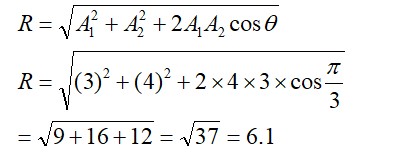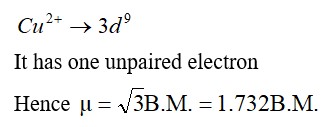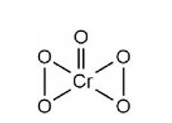Given below are two statements.
Statement I: Iron (III) catalyst, acidified K2Cr2O7 and neutral KMnO4 have the ability to oxidize I- to I2 independently.
Statement II: Magnate ion is paramagnetic in nature and involves pp-pp bonding
In the light of the above statements, choose the most appropriate answer from the options given below.
Given below are two statements.
Statement I: Iron (III) catalyst, acidified K2Cr2O7 and neutral KMnO4 have the ability to oxidize I- to I2 independently.
Statement II: Magnate ion is paramagnetic in nature and involves pp-pp bonding
In the light of the above statements, choose the most appropriate answer from the options given below.
Option 1 -
Both Statement I and Statement II are true.
Option 2 -
Both Statement I and Statement II are false.
Option 3 -
Statement I is true but Statement II is false.
Option 4 -
Statement I is false but Statement II is true.
-
1 Answer
-
Correct Option - 2
Detailed Solution:Neutral KMnO4 oxidises I- to
Similar Questions for you
K2Cr2O7 + H2O2 + H2SO4->
Potassium permanganate in alkaline medium oxidise lodide to lodate.
Compound A is
KMnO4 decomposes upon heating at 513 K and forms K2MnO4 and MnO2.
2KMnO4
Taking an Exam? Selecting a College?
Get authentic answers from experts, students and alumni that you won't find anywhere else
Sign Up on ShikshaOn Shiksha, get access to
- 65k Colleges
- 1.2k Exams
- 679k Reviews
- 1800k Answers




